Dating from 1902, Ealing Studios ‘can claim to be the oldest film studio in the world’. It enjoyed a golden era under the leadership of Sir Michael Balcon, whose much-loved ‘Ealing comedies’ began in 1947. They included The Ladykillers, The Lavender Hill Mob and Passport to Pimlico. These premises are now named after him. They were built in the late 19th century and, for much of the period since then, had been Bryant’s furniture store.
A photograph of Sir Michael Balcon in the 1930s.
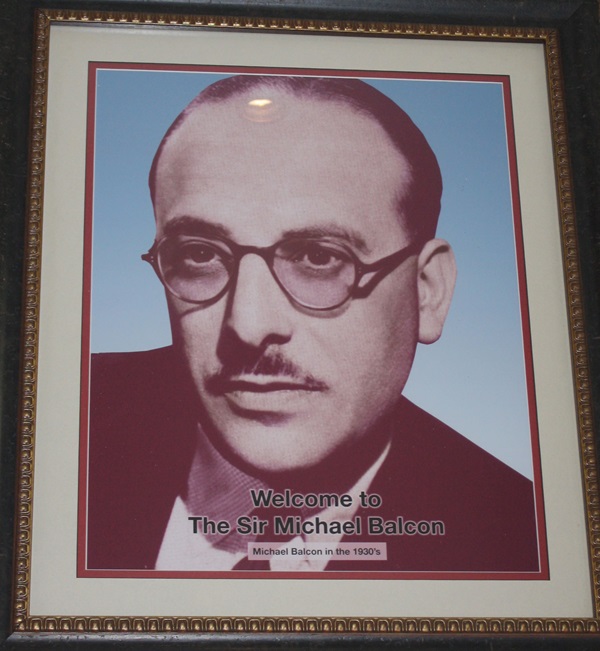
Text about Sir Michael Balcon.
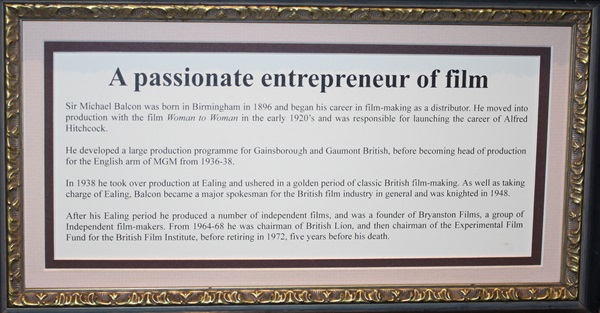
The text reads: Sir Michael Balcon was born in Birmingham in 1896 and began his career in film-making as a distributor. He moved into production with the film Woman to Woman in the early 1920s and was responsible for launching the career of Alfred Hitchcock.
He developed a large production programme for Gainsborough and Gaumont British before becoming head of production for the English arm of MGM from 1936-38.
In 1938 he took over production at Ealing and ushered in a golden period of classic British film-making. As well as taking charge of Ealing, Balcon became a major spokesman for the British film industry in general and was knighted in 1948.
After his Ealing period he produced a number of independent films, and was a founder of Bryanston Films, a group of Independent film-makers. From 1964-68 he was chairman of British Lion, and then chairman of the Experimental Film Fund for the British Film Institute, before retiring in 1972, five years before his death.
Text about Sir Michael Balcon.
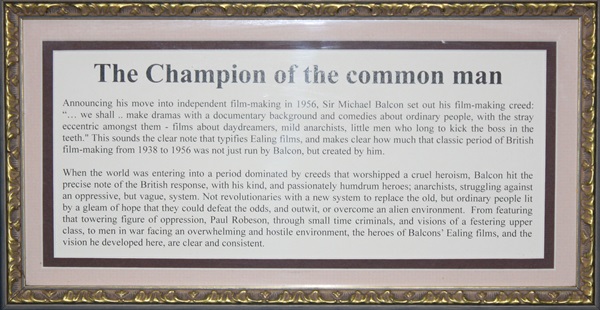
The text reads: Announcing his move into independent film-making in 1956, Sir Michael Balcon set out his film-making creed: "...we shall... make dramas with a documentary background and comedies about ordinary people, with the stray eccentric amongst them - films about daydreamers, mild anarchists, little men who long to kick the boss in the teeth." This sounds the clear note that typifies Ealing films, and makes clear how much that classic period of British film-making from 1938 to 1956 was not just run by Balcon, but created by him.
When the world was entering into a period dominated by creeds that worshipped a cruel heroism, Balcon hit the precise note of the British response, with his kind, and passionately humdrum heroes; anarchists, struggling against an oppressive, but vague, system. Not revolutionaries with a new system to replace the old, but ordinary people lit by a gleam of hope that they could defeat the odds, and outwit, or overcome an alien environment. From featuring that towering figure of oppression, Paul Robeson, through small time criminals, and visions of a festering upper class, to men in war facing an overwhelming and hostile environment, the heroes of Balcons' Ealing films, and the vision he developed here, are clear and consistent.
Photographs and text about Ealing’s golden age.
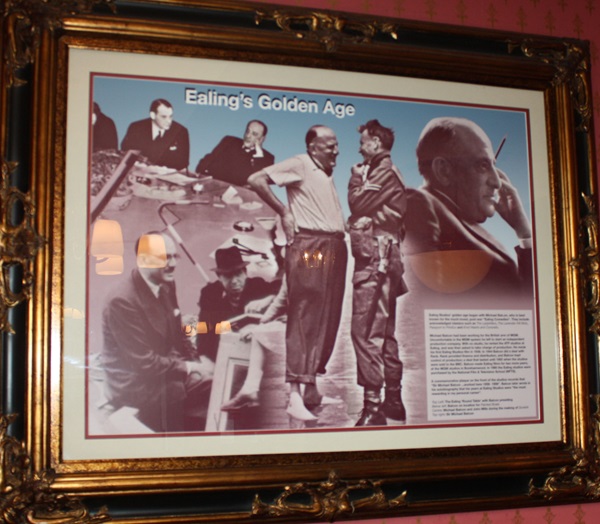
The text reads: Ealing Studios' golden age began with Michael Balcon, who is best known for the much-loved, post-war "Ealing Comedies”. They include acknowledged classics such as The Ladykillers, The Lavender Hill Mob, Passport to Pimlico and Kind Hearts and Coronets.
Michael Balcon had been working for the British arm of MGM. Uncomfortable in the MGM system he left to start an independent production company. With no studio, he rented the ATP studios at Ealing, and was then asked to take charge of production. He made his first Ealing Studios film in 1938. In 1944 Balcon did a deal with Rank. Rank provided finance and distribution, and Balcon kept control of production; a deal that lasted until 1955 when the studios were sold to the BBC. Balcon made Ealing films for two more years, at the MGM studios in Borehamwood. In 1995 the Ealing studios were purchased by the National Film & Television School (NFTS).
A commemorative plaque on the front of the studios records that "Sir Michael Balcon ...worked here 1938- 1956". Balcon later wrote in his autobiography that his years at Ealing Studios were "the most rewarding my personal career”.
Top left: The Ealing 'Round Table' with Balcon presiding
Below left: Balcon on location for Painted Boats
Centre: Michael Balcon and John Mills during the making of Dunkirk
Top right: Sir Michael Balcon.
Photographs and text about Ealing Studios.
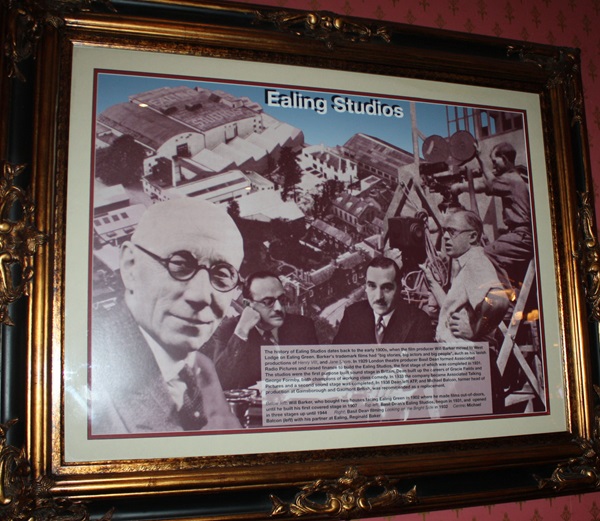
The text reads: The history of Ealing Studios dates back to the early 1900s, when the film producer Will Barker moved to West Lodge on Ealing Green. Barker's trademark films had "big stories, big actors and big people, such as his lavish productions of Henry VIII, and Jane Shore. In 1929 London theatre producer Basil Dean formed Associated
Radio Pictures and raised finance to build the Ealing studios, the first stage of which was completed in 1931. The studios were the first purpose built sound stage in Britain. Dean built up the careers of Gracie Fields and George Formby, both champions of working class comedy. In 1933 the company became Associated Talking Pictures and a second sound stage was completed. In 1938 Dean left ATP and Michael Balcon, former head of production at Gainsborough and Gaumont British, was recommended as a replacement
Below left: Will Barker, who bought two houses facing Ealing Green in 1902 where he made films out-of-doors, until he built his first covered stage in 1907
Top left: Basil Dean's Ealing Studios, begun in 1931, and opened in three stages up until 1944
Right: Basil Dean filming Looking on the Bright Side in 1932
Centre: Michael Balcon (left) with his partner at Ealing, Reginald Baker.
Photographs of Ealing stars – 1931 to 1952.
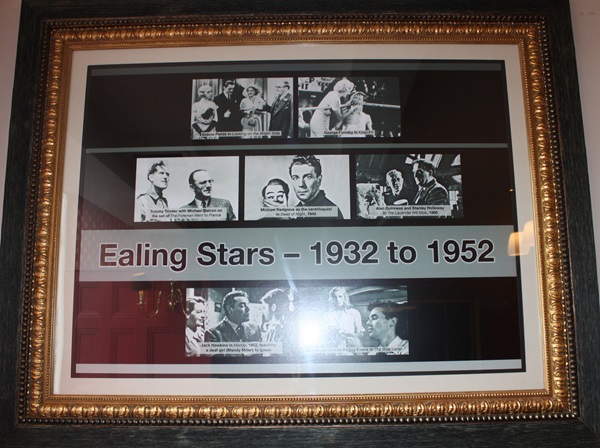
Photographs and text about ‘bright fellows’ from the area.
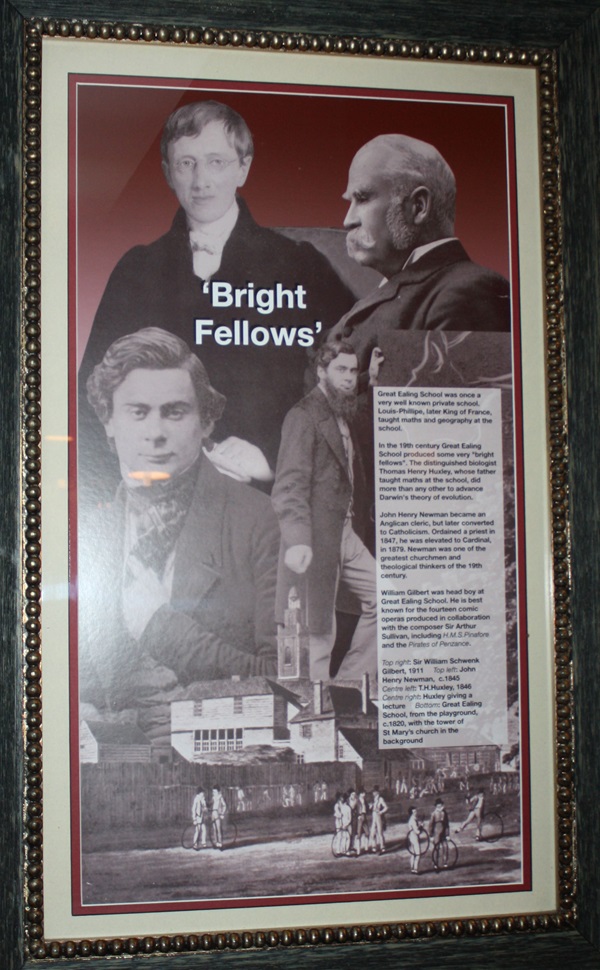
The text reads: Great Ealing school was once a very well-known private school. Louis-Phillipe, later King of France, taught maths and geography at the school.
In the 19th century Great Ealing School produced some very ‘bright fellows’. The distinguished biologist Thomas Henry Hurley, whose father taught maths at the school, did more than any other to advance Darwin's theory of evolution.
John Henry Newman became an Anglican cleric, but later converted to Catholicism. Ordained a priest in 1847, he was elevated to Cardinal, in 1879, Newman was one of the greatest churchmen and theological thinkers of the 19th century.
William Gilbert was head boy at Great Ealing School. He is best known for the fourteen comic operas produced in collaboration with the composer Sir Arthur Sullivan, including HMS Pinafore and the Pirates of Penzance.
Top right: Sir William Schwenk Gilbert, 1911
Top left: John Henry Newman, c1845
Centre left TH Huxley, 1846
Centre right: Huxley giving a lecture
Bottom: Great Ealing School, from the playground, c1820, with the tower of St Mary's church in the background.
A photograph of Flora Robson and Stewart Granger in Saraband for Dead Lovers.
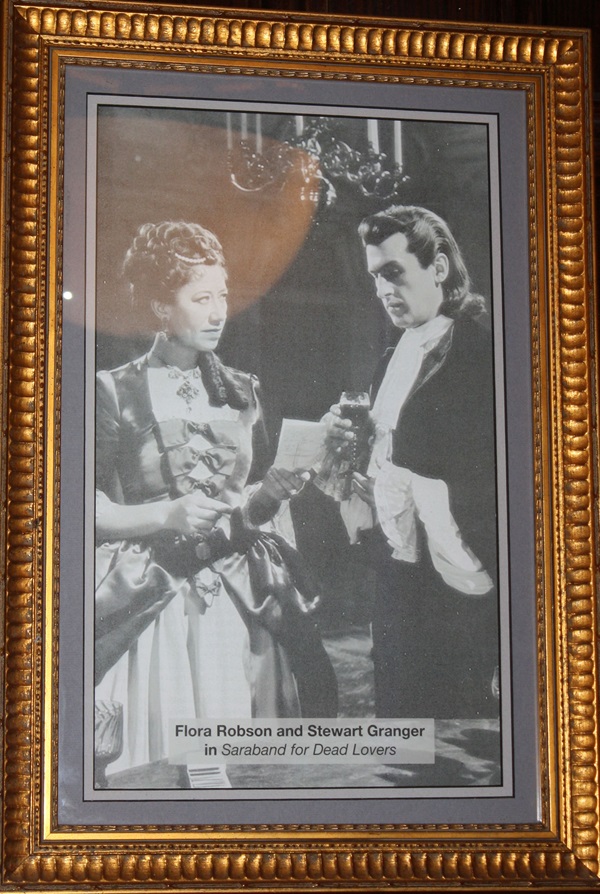
Photographs of John Mills on location for Dunkirk and Dirk Bogarde and Peggy Evans in The Blue Lamp.
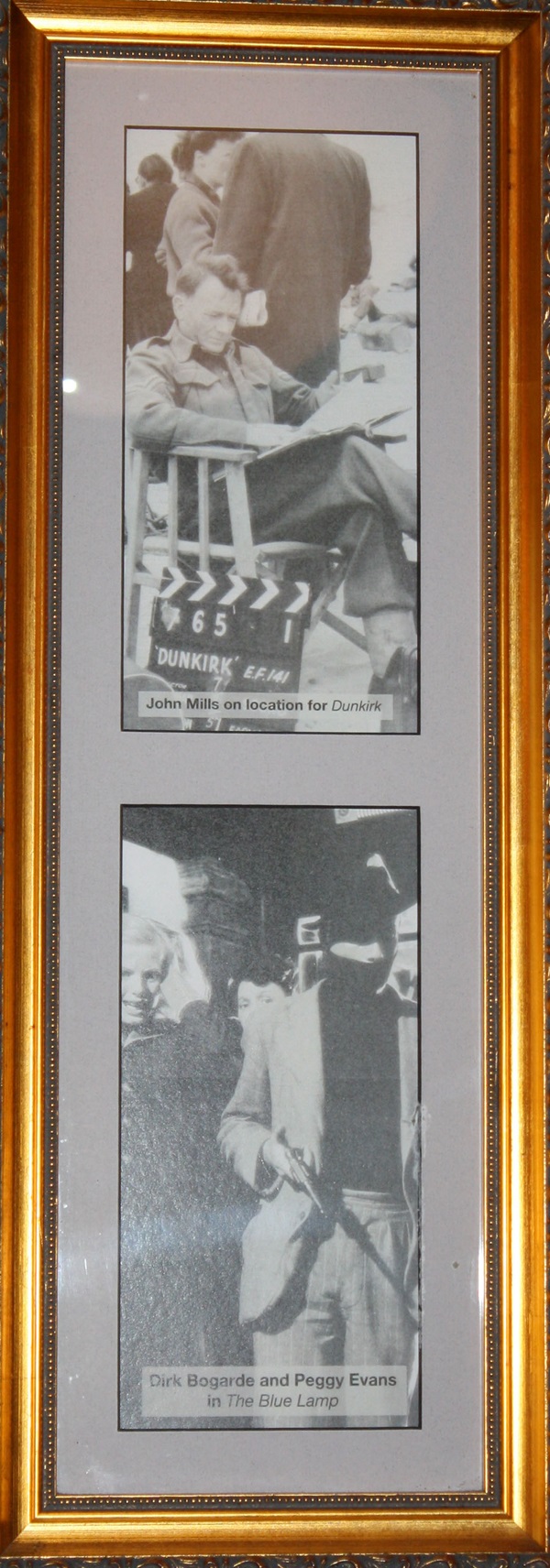
A photograph of Paul Robeson, with Simon Lack in The Proud Valley, 1940.
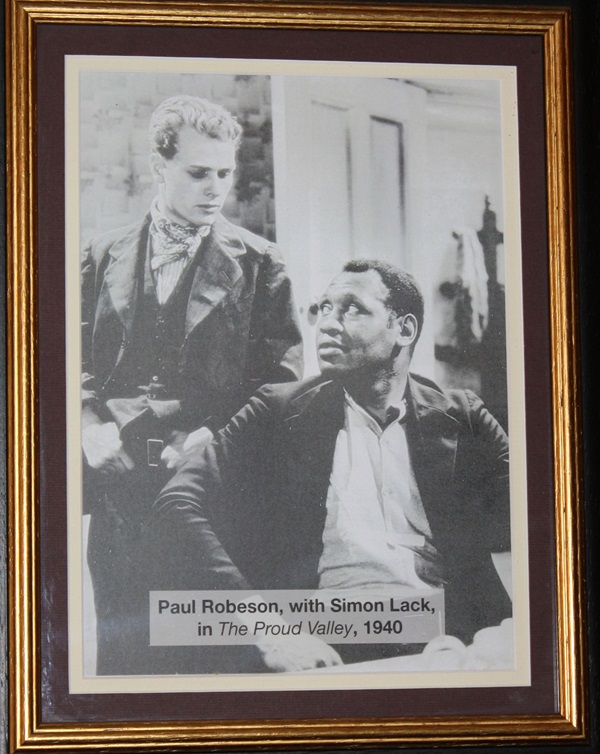
A photograph of Alec Guinness and Stanley Holloway making Eiffel Towers from stolen gold bullion, in The Lavender Hill Mob.
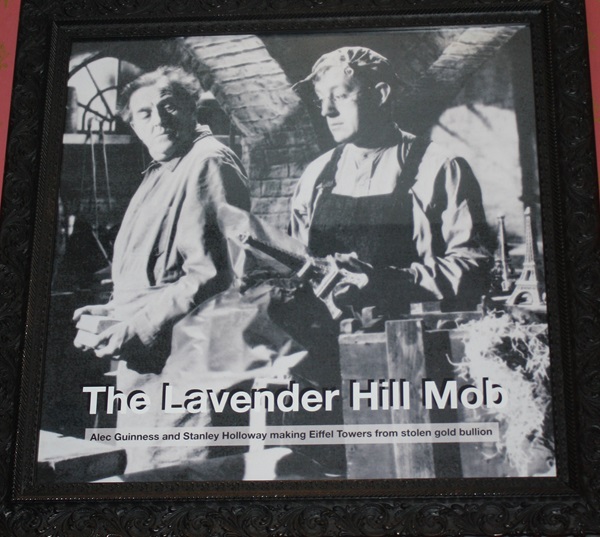
A print of The Assassination of Spencer Perceval by John Bellingham, 11 May 1812.
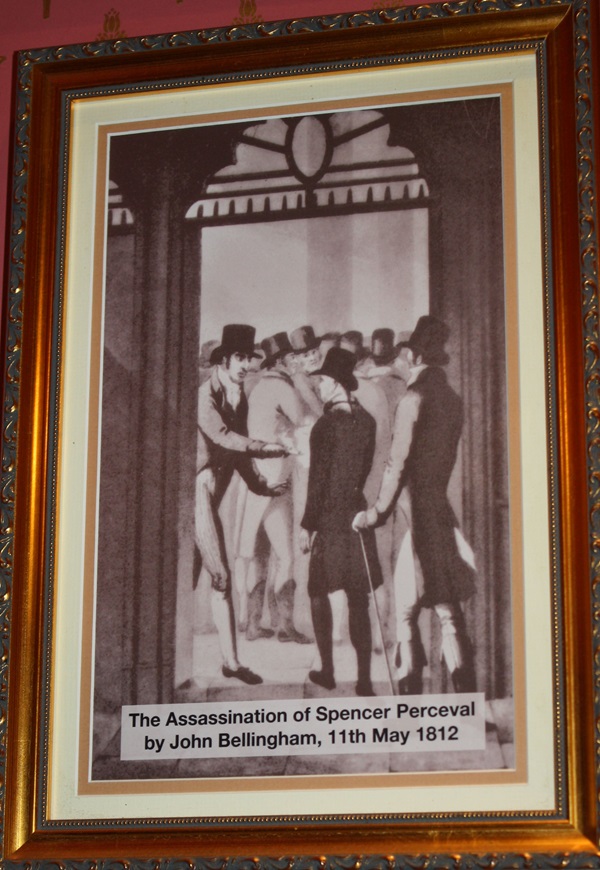
Prints of Elm Grove House in 1870 and Spencer Perceval, 1762 -1812.
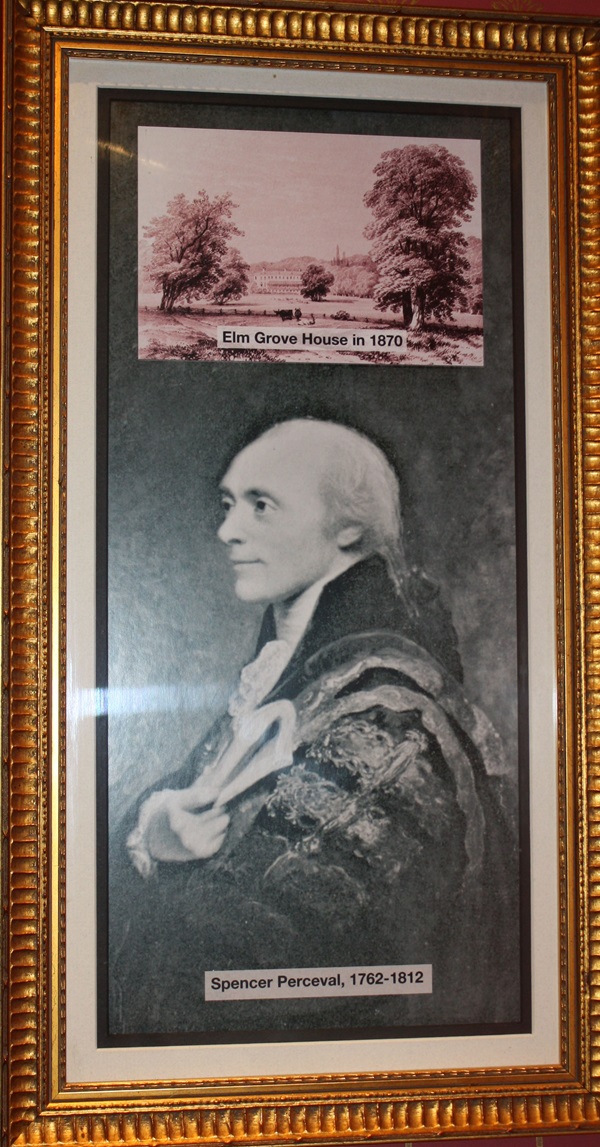
An illustration of Elm Grove, formerly “Hicks-on-the-Heath”.
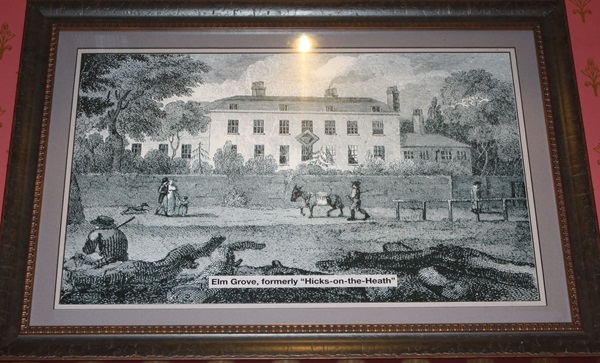
Text about Pitshanger Manor.
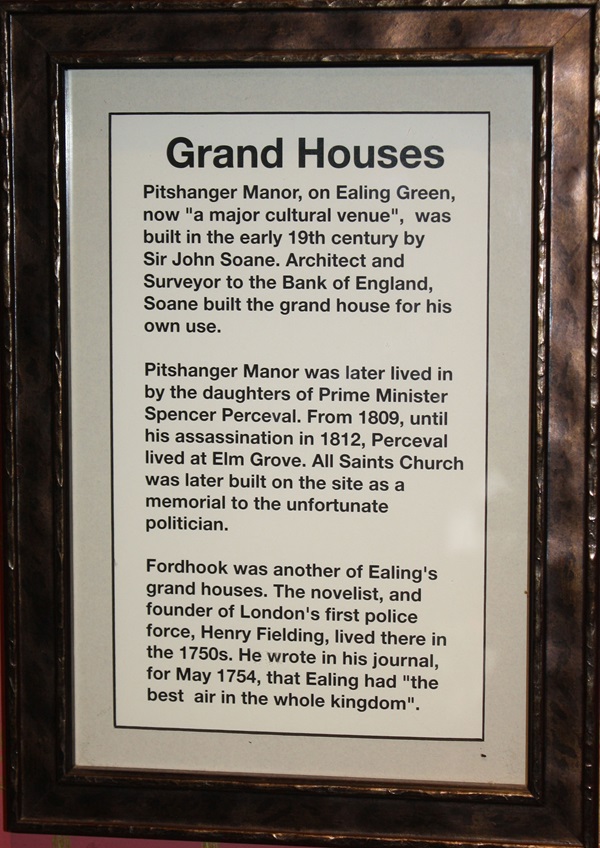
The text reads: Pitshanger Manor, on Ealing Green, now "a major cultural venue” was built in the early 19th century by Sir John Soane. Architect and Surveyor to the Bank of England, Soane built the grand house for his own use.
Pitshanger Manor was later lived in by the daughters of Prime Minister Spencer Perceval. From 1809, until his assassination in 1812, Perceval lived at Elm Grove. All Saints Church was later built on the site as a memorial to the unfortunate politician.
Fordhook was another of Ealing's grand houses. The novelist, and founder of London's first police force, Henry Fielding, lived there in the 1750s. He wrote in his journal, for May 1754, that Ealing had "the best air in the whole kingdom".
A print of Sir John Sloane, 1829.
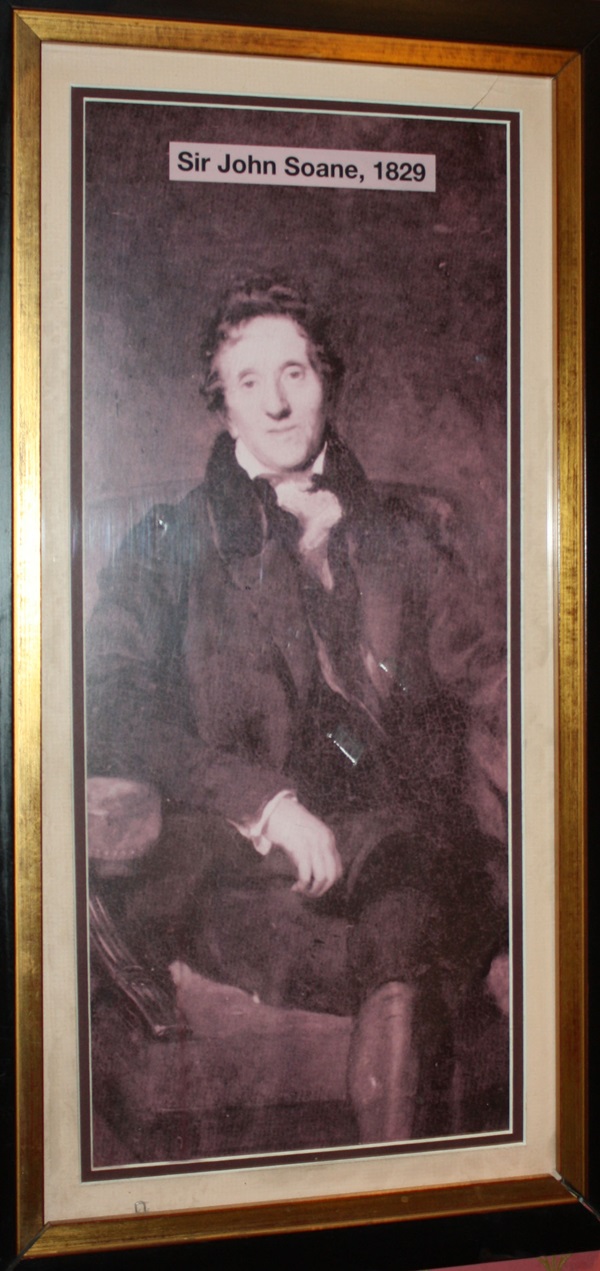
An illustration of Pitshanger Manor, as redesigned by Sir John Sloane in 1800.
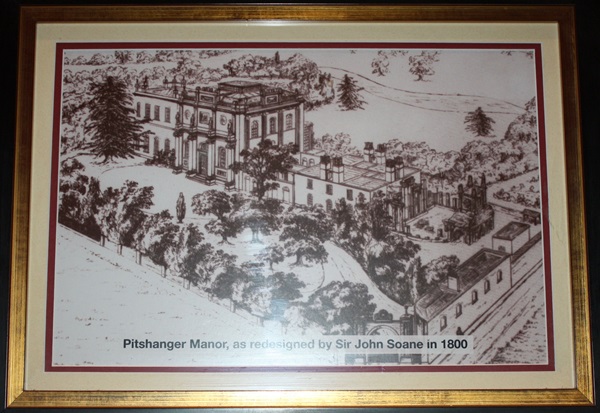
An illustration of Henry Fielding, 1762.
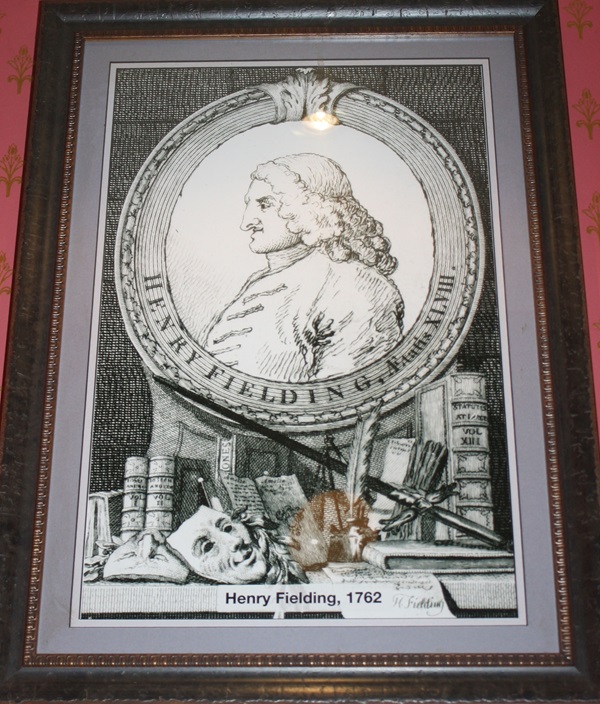
An acrylic painting entitled The Man in the White Suit, by Jason Adamson.
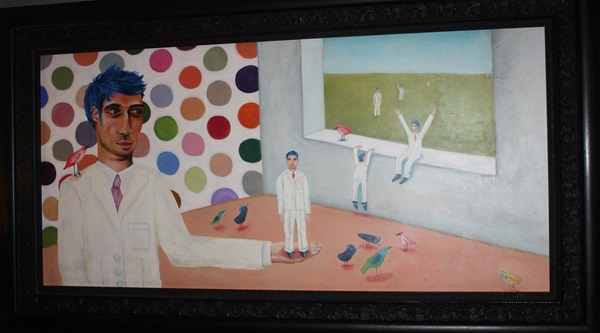
Jason is one of the artists selected by Wetherspoon to carry out commissions in their new developments.
“This idea evolved from a typical surrealist theme of small repetitive suited figures, such as in the work of Magritte. I wanted to animate these figures and give them a purpose. I think the painting makes the viewer ask a lot of questions”.
An acrylic painting entitled Lavender Hills, by Jason Adamson.
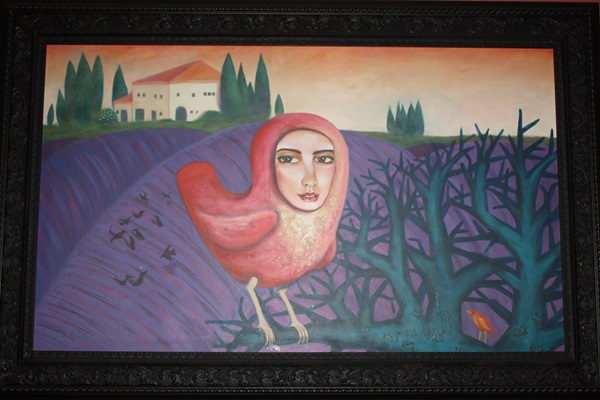
“This idea came from a previous series of images, and a favourite theme of mine, based on ‘Human Birds’, inspired by the work of Frida Kahlo. In this piece, a solemn bird in a tree surveys her land, her ‘Lavender Hills’.
External photograph of the building – main entrance.
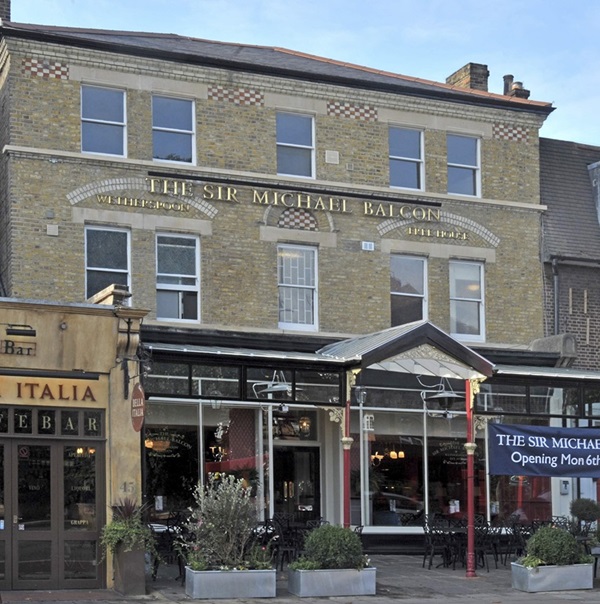
If you have information on the history of this pub, then we’d like you to share it with us. Please e-mail all information to: pubhistories@jdwetherspoon.co.uk